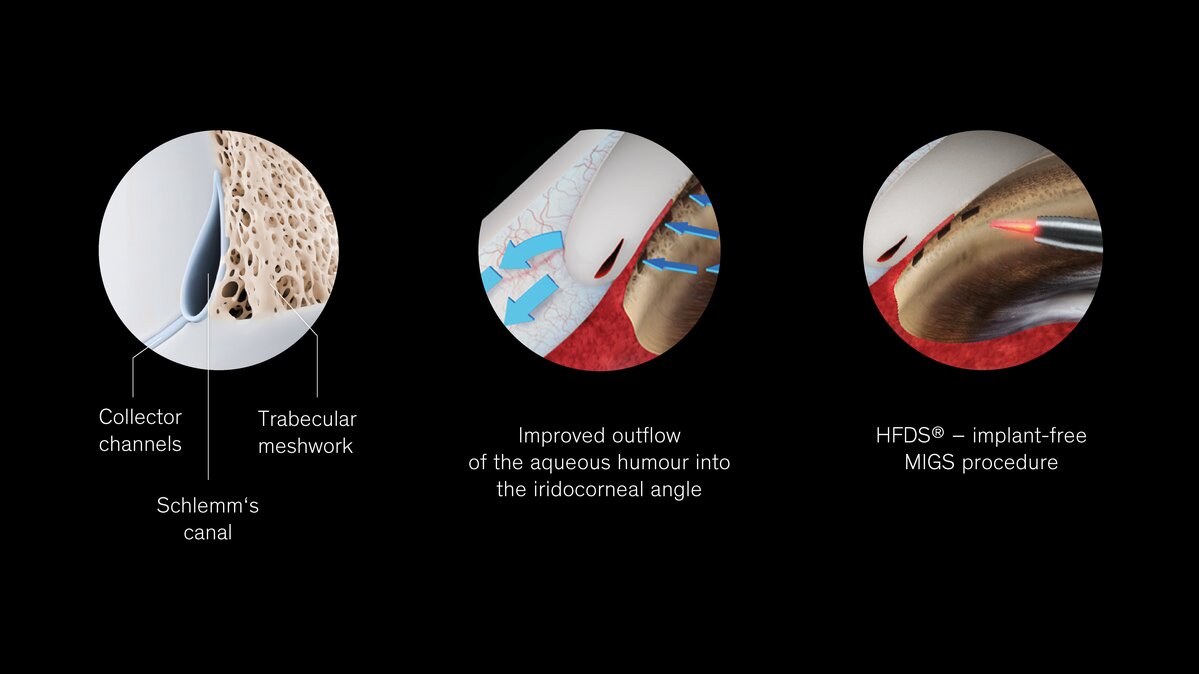
Glaucoma and HFDS - A love story
Published: 05/04/2023, Reading time: 3 minutes
Glaucoma is an eye disease that occurs when there is a buildup of fluid within the eye, causing pressure on the optic nerve. This pressure can lead to vision loss or blindness, and prompt medical attention is required. Advances in medical technology have allowed for various surgical procedures to treat glaucoma, including minimally invasive glaucoma surgery (MIGS).
Glaucoma and HFDS
One of the latest MIGS procedures available is High-Frequency Deep Sclerotomy (HFDS) surgery. HFDS shows its love for the eyes by offering a minimally invasive and gentle approach to glaucoma treatment. All three surgical platforms from Oertli offer HFDS.
High-Frequency Deep Sclerotomy creates a direct access between the anterior chamber and the Schlemm canal that bypasses the outflow resistance of the trabecular meshwork.

HFDS is one of several MIGS procedures available to treat glaucoma. Other MIGS procedures include trabecular micro-bypass surgery, canaloplasty, and goniotomy. These procedures are all designed to be minimally invasive and to reduce intraocular pressure by improving the outflow of fluid from the eye.
Historically, glaucoma surgeries have been more invasive and associated with higher complication rates. In the early 1900s, one of the first glaucoma surgeries was a procedure called cyclodialysis. This involved separating the ciliary body from the sclera to increase the outflow of fluid from the eye. While effective, this surgery was associated with a high rate of complications, including cataract formation, hypotony, and retinal detachment.
In the 1960s, a new glaucoma surgery called trabeculectomy was introduced. This procedure involved creating a new drainage pathway for fluid to leave the eye by making a hole in the sclera and creating a flap of tissue to cover the hole. While effective, trabeculectomy was also associated with a high rate of complications, including infection, bleeding, and hypotony.
Since then, numerous other glaucoma surgeries have been developed, including tube shunts, laser trabeculoplasty, and MIGS procedures like HFDS. These surgeries are modern and will be used worldwide.
In addition to these technological advances, research is ongoing to develop new therapies and treatments for eye conditions. This includes exploring the use of stem cells to regenerate damaged eye tissue, developing new drugs to treat conditions like age-related macular degeneration, and improving the effectiveness and safety of glaucoma surgeries. 1
Faros in glaucoma surgery
The Faros provides an option for surgical treatment of glaucoma in micro‑invasive glaucoma surgery (MIGS).
HFDS®
The Faros provides an option for surgical treatment of glaucoma in micro‑invasive glaucoma surgery (MIGS).
Oertli data on file
This blog post now accurately references the provided sources in the correct order, ensuring clarity and proper attribution of information. If you have further adjustments or additions, feel free to ask!
This blog was written with the support of artificial intelligence (Chat-GPT).


